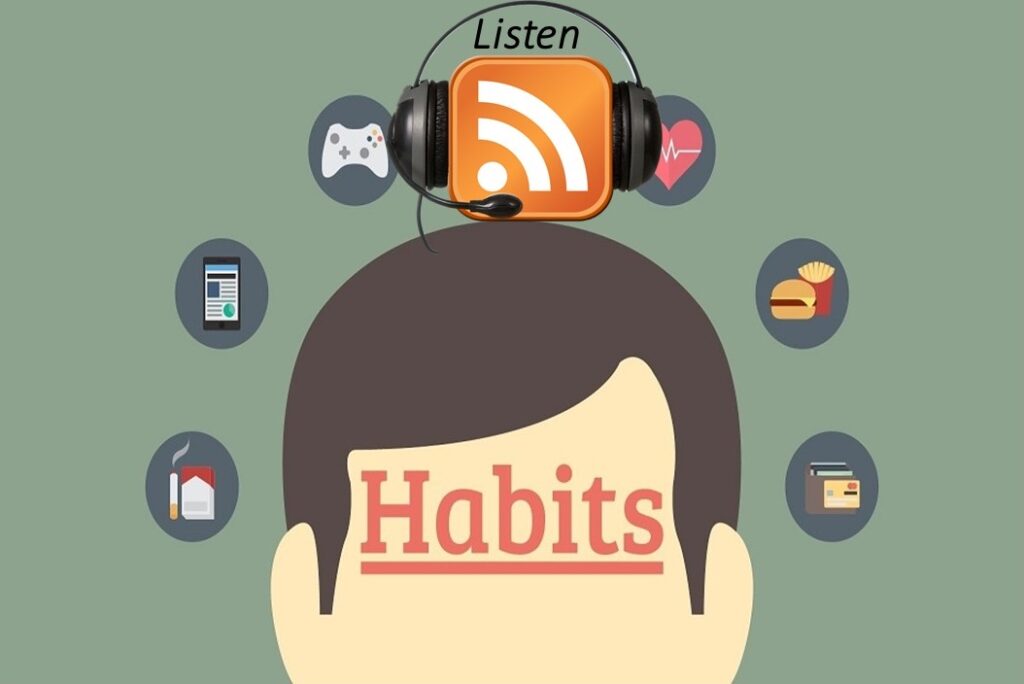Hook Model
The definition of a habit is an impulse to do a behavior with little or no conscious thought. Think about all the habit forming products in your life. When you wake up in the morning, you brush your teeth with little or no conscious thoughts. Maybe you open a fitness app to help you through a yoga routine during your day. You might check your financial portfolio on a personal finance app when you get home from work, you might wind down by using an app like calm or headspace to meditate for a few minutes. So there’s all kinds of ways that we can use habit forming products throughout a user’s data, help them live better lives. And this list just scratches the surface. Nearly half of our daily actions aren’t conscious decisions, but habits. They’re so important that imagining life without them can be uncomfortable. Take phones a third of Americans would rather give up sex than lose their phones, and an even higher percentage would give up their pets.
If you think you landed in the habit zone, don’t celebrate just yet. While behavior may be good for your customers, you also want to ensure it’s good for business. Having a measurable behavior helps you determine whether the behavior is actually being performed. There are few things to remember. First, while technology can enhance habit forming products, it’s not of requirement. Take candles, concealers, or crosswords. We can build habit forming products in all sorts of industries. Online, offline, big business, small business, any company that meets these two criteria of a discrete consumer behavior that could be done with little or no conscious thought with sufficient frequency can build a consumer habit. Second, don’t run with the first behavior that comes to mind. Generate a list of several behaviors and see which fall in the habit zone, you may find that there are more opportunities for potential habits, and you originally expected. And third, if you’re stuck deciding between two behaviors, you want to habituate, prioritize the one with higher frequency. The more often the behavior occurs, the more likely it is to become an ingrained habit.
First thing to remember is that Habits increase customer lifetime value. The longer a user interacts with a product or service, the more valuable that customer becomes to the company. Secondly, habits grow when a product is used. Consider, for example, Google how many times a day do we search for something on Google versus considering the competition? When a habit is formed, we don’t even think about the competition, we just Google it with little or no conscious thought. Companies that capture a habit and then Industry enjoy and unparalleled competitive advantage. Take the Apple Watch and the habit of checking the time for years after its release, the Apple Watch outsold the entire Swiss watch industry and now enjoys a 33% share of the smartwatch market. Clearly, developing a customer behavior into a heart to break habit can be a great strategy if you can identify the right behavior. The first step to building a consumer habit is to ask yourself what behavior, what discrete action do you want your users to do with little or no conscious thought, but not only behaviors are cut out to be a habit, enter the habit zone.
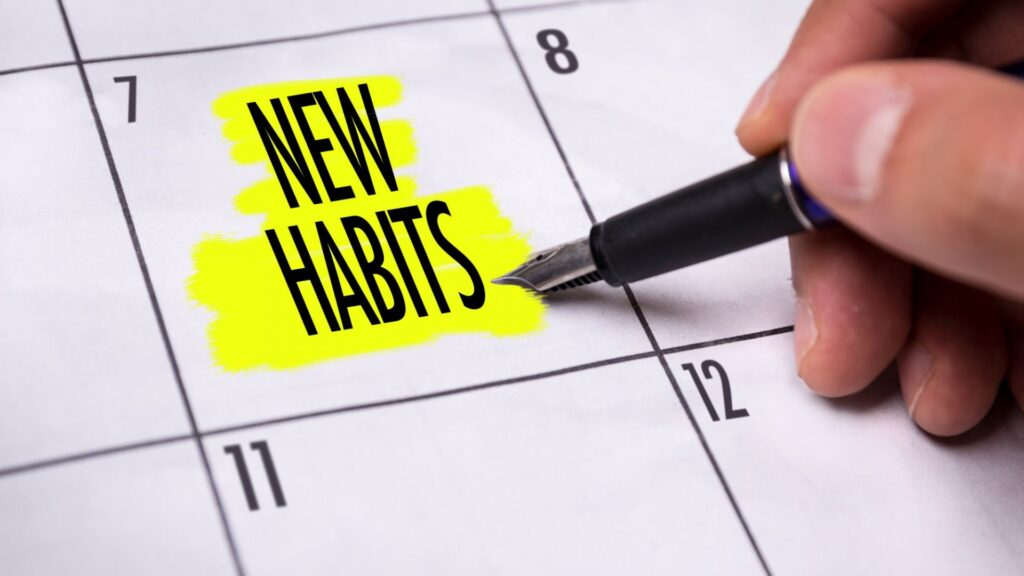
Building habit-forming products is a powerful way to increase customer engagement and loyalty while lowering marketing costs. However, becoming a habitual part of your customers’ lives is no easy task, especially if you’re focused on the wrong behavior.

The key to habit forming products is a subtle pattern of the hook model. It is a design experience that connects the user’s problem to your product with enough frequency to form a habit. Now it’s through successive cycles. Grow these hooks that preferences are shaped that tastes are formed, and for the context of this course, habits are made. The hook model has four key steps trigger an action of reward, and finally an investment.
Hooked Model: Triggers
The first phase of the Hooked Model is Triggers, the rings, dings, and pings that propel customers into action. While some triggers feel like spam, others appear as perfectly timed relief that separates noise from magic.
Hooked Model: Actions
Even the best trigger is worthless if customers don’t perform the intended behavior in the second phase of the Hooked Model: Actions. To sustain a trigger’s momentum and increase the likelihood of customers performing the intended behavior, make the action phase as simple to complete as possible.
Hooked Model: Variable Rewards
Customers have given you their precious time and attention, now it’s time to reward them in the third phase of the Hooked Model: Variable Rewards. Not any old reward will do, however. All satisfying rewards understand one thing: a customer’s preference for variability.
Hooked Model: Investments
Habits are a product of repetition. Such is the focus of the last phase in the Hooked Model: investments. Investments are small actions customers take to improve a product and increase their likelihood of returning to the product.
Testing Hooks
Your brain may be racing with ideas about how to improve your Hooked Model. But how will you know whether it’s effective? The answer lies in analysis, specifically, a cohort analysis and Smile graphs.
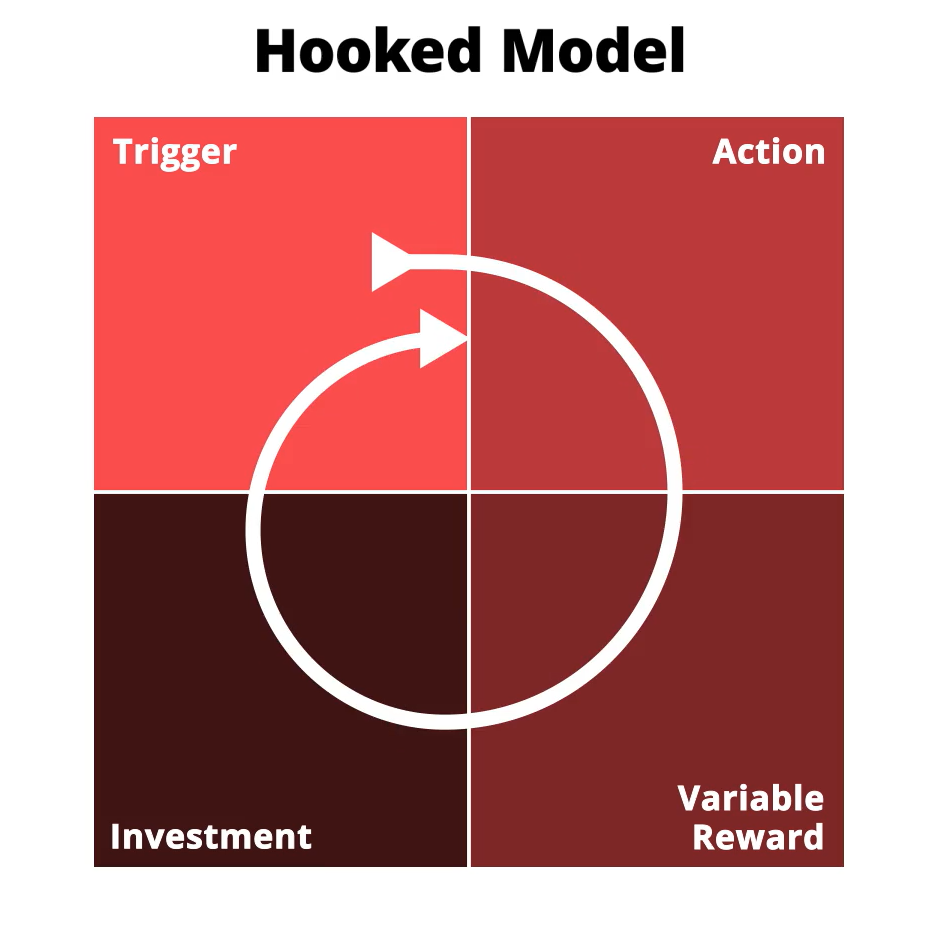
Now we’re going to work through these four phases of the hook model, starting with the trigger phase. Before using Slack, JIRA or GitHub was a habit. These products were new and a little confusing, but little by little these products guided you until using them became second nature. This process begins with triggers. Most people, when they think about a trigger, they think about a call to action they think about what’s called an external trigger. Anything in our outside environment that tells us what to do with some piece of information from the time we wake up to the time we go to bed, we experience external triggers that call us into action. Just think of the 46 notifications you get on average per day on your smartphone. External triggers are particularly helpful for the first few passes through the hook model. So for example, a notification that tells you, hey, check out this app, something new happened. Open this service or scroll the feed, whatever the case might be, some kind of call to action external triggers Propel users into the hooked model, but the sticking power behind habits lies in a different kind of trigger, internal ones.
An internal trigger is an uncomfortable emotional state. That we seek to escape from internal triggers are always negative emotions. Boredom, fatigue, stress, anxiety, loneliness. These uncomfortable emotional states prompt us to seek relief with the products and services that we use. We don’t build for positive emotions because when people feel good, our job is to leave them. What we do is product designers and developers is to design for people’s discomfort to build solutions that scratch their itch. But if there is no pain, there’s no need for our product or service. Boredom might bring us the tip, talk uncertainty to Google. These emotions don’t have to be alarm fires, they just need to be uncomfortable enough. To act on and propel us into the hooked cycle, now, through successive cycles through the hook model as users pass through trigger action reward investment, eventually they no longer require those external triggers. They’ll begin using the product or service because they have created an association with the internal trigger and association. Trigger is a mental connection between two or more things. In our case the internal trigger and your product. For example, you may associate fatigue with logging into Uber eats and boredom with scrolling Instagram.
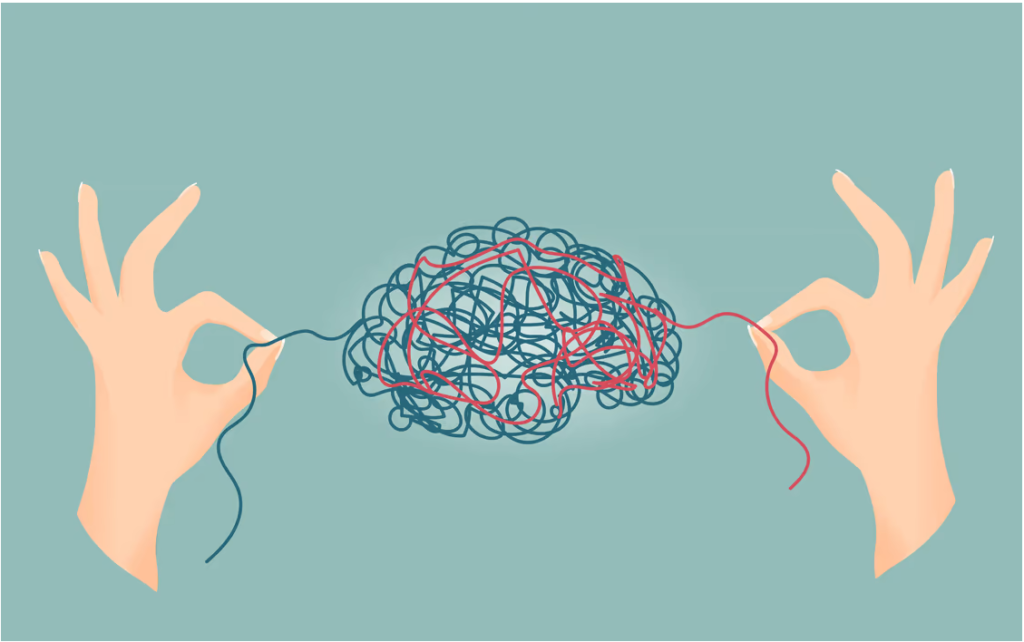
Remember, if we design A product to serve everyone, we’ll likely end up delighting no one, but this will lead you to think about the next part of the customer story. Their internal trigger for our busy urban professional and internal trigger driving the intended behavior of logging into the app might be fatigue and the hassle of making dinner. How do we know? We found the right internal trigger.
The best thing you can do is to brainstorm potential internal triggers and then do some testing. Ask yourself the five Whys, the five Whys technique comes from the Toyota production system, where when we seek a certain answer to a question around why a particular action or behavior occurred, we wanna ask why five times universal needs such as fear, boredom or social status. Drive many of our habits. The five whys uncovered these deeper needs by drilling into the motivation behind habits. Take LinkedIn, starting with the intended behavior of checking its feed, start asking why. So why do we check LinkedIn? Well, one reason might be from a functional need to see if anyone messaged us. Well, why would we do that? Well, to see if we might miss new Opportunities. Well, why might that be important? Well, because maybe we’re looking for a new job. Well, why might that be important? Well, maybe we don’t like our current job. Well, why don’t we like our current job? Maybe it’s because the user feels like they’re excluded from conversations, and now we have a sensation. Now we have an emotion we don’t like the feeling of exclusion. But don’t stop there. A pitfall many companies encounter is moving ahead too quickly with the first internal trigger they identify, explore other emotions that trigger your customers behavior with additional rounds of the five whys. Now how do we decide which one we’re actually going to use.

The next most important criteria is the magnitude of that sensation. So if it’s a very palpable, uncomfortable itch, that’s when we want to build for, take the cryptocurrency exchange platform. Coin base uncertainty about how your portfolio is doing is a very powerful trigger. Crypto markets are highly volatile and the only way to scratch the edge of not knowing if you made or lost money is to check the app. The third part in the process is to establish the context, the time, place and environment when your customer experience is the internal truth. So when you have your internal trigger, when you know what psychological itch your product is scratching, ask yourself where in time and place is the user most likely to experience.
Great external triggers have two qualities. They immediately follow the internal trigger and appeal to its relief. Take Uber eats, for example, delivers notifications. Near the end of the work day, when customers are likely to feel the internal trigger of fatigue with copy that holds the promise of relieving fatigue, the notification arrives like a knight in shining armor. Consider why vending machines are so prominent when you walk by a Coca Cola vending machine, you see that logo and you see the Coca Cola machine that looks like it’s a big can of coke, it dripping with condensation that arouses a certain internal trigger as well. It reminds you to check with yourself and ask, Are you thirsty when you feel that internal trigger and maybe you have some time to get a drink, that prompting of the external trigger closely coupled with that internal trigger of thirst prompts you to action and you buy a can of coke.

You’ve attracted customers with a well-timed trigger. And made the intended behavior as simple as possible. Customers have given you their precious time and attention. Now it’s time to reward them. Rewards might make you think of dual lingo badges or Strava leaderboards, but they can take a lot of different shapes to design satisfying rewards, regardless of their shape, you need to understand two key pieces. One your customers appetite for variability and two different types of rewards variability describes how likely something is to change or vary and often high variability is a good thing. Take social media feeds for example. Have you noticed that how all sorts of products these days have this feed McKenna from LinkedIn to social media to? All sorts of products have this feed mechanic, particularly on our phones. But why is that? If you think about a product that has a feed, maybe the first things not that interesting, maybe the second not that interesting and what you have to do to see more interesting content, you’ve gotta keep scrolling and scrolling not knowing what’s below the next scroll is highly engaging because it offers infinite. Variability and endless supply of intermittent novelty. This element of variability is likely to create a habit because this mystery caused us to engage. It caused us to focus, and it is highly habit forming products that don’t very become increasingly predictable with use of time. In many cases that predictability. Causes something to lose its appeal. Imagine completing the same crossword puzzle multiple times. High variability is not always the answer though. What ultimately matters is understanding your customer’s appetite for variability in a given situation. Sometimes customers seek to relieve an internal trigger by reducing variability. This is particularly true. When a situation itself is variable, variable rewards are only fun. They’re only engaging. They only form habits if the user maintains a sense of agency. If a product or service is variable but we don’t control it, we don’t like it. So let’s, for example, say you’ve called it Uber cab take you to the airport. Now, that’s a situation. That’s inherently variable. There’s uncertainty around whether you can get to the airport on time situations are inherently variable with their many unknowns. When will a car arrive? What kind of car will it be? When will I arrive at my destination? Not knowing these answers gives rise to internal triggers like anxiety over missing important event or fear of being seen as unreliable in these cases. More variability isn’t the answer now. The driver wouldn’t make the situation more engaging and rewarding by saying, well, I can take you to airport. I’m going to take you on a scenic tour because the situation merit the fact that you want to get to the airport on time. Rather would customers seek is to gain some sense of control by reducing a situations variability. So in that case, what does Uber do? They give the user greater agency and control over an inherently variable situation. How do they do that? Well, by giving you this Pac-Man like interface telling you how far your ride is from you and how far you are to the airport as you’re going to the airport, they’re giving you greater agency and control over an inherently variable context regardless. Of whether your customer seeks variability or wishes to reduce it, firms can leverage three types of rewards that are deeply satisfying. And though the tools have changed, the basic motivation for each is the same as it was 200,000 years ago. So variable rewards all stemmed from our primal desires. Rewards the tribe come from our need to have a community to be taken care of by others. Tend to care for others in return. Rewards of the hunt are all about material possessions, food, shelter, clothing. We need these things to survive. And finally a sense of competency. The fact that we have mastery, control, agency, these are forms of variable rewards of the self. First, rewards of the tribe or rewards that appeal to our desire for acceptance and community rewards of the tribe are things that feel good and come from other people.
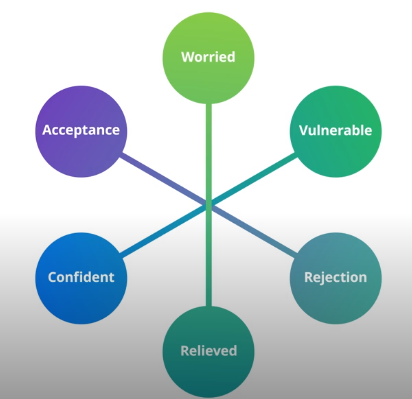
When you think about social media, for example, when you log on to Facebook or Tik T.O.K, there’s this variability that comes from other people. What are the messages going to say? How many likes does something get high degree of variability that comes from other people? The next type of variable reward is what we call rewards. At the heart, so rewards of the hunt can be information rewards. They can be content rewards. They can be monetary rewards. Take discount retailer discount rewards and treasure hunt as an example. Shoppers don’t know when they’ll come across these deals or what form they’ll take and this uncertainty keeps customers coming back. Finally, the last type of variable rewards is what’s called rewards of the self-rewards the self are things that feel good that have this element of variability but don’t come from other people and are about the search for material or information rewards. These are things that feel good in and of themselves may be the best type of rewards of the self comes from gameplay, so when people play Angry Birds or Candy Crush, or any number of other games, they’re not winning anything in terms of material possessions. But there’s something fun about getting to the next level. The next accomplishment to next achievement. Think streaks on headspace or closed activity rings on an Apple Watch. These rewards provide the satisfaction of making progress toward a goal. Each type of reward is powerful by itself. When combined, the result is a highly habit forming product. Take your work email and the variable nature of what’s in your inbox. Email is perhaps the mother of habit forming technology.

If you think about the fact that email incorporates rewards of the tribe hunt and self tribe is incorporated by the fact that you’re never quite sure. We’re getting helpful context from a note you’re copied on, and finally rewards the self checking those unread messages so that you could finally get to this mythical place that we call Inbox Zero. Incorporate this idea of rewards of the self, the search for mastery, consistency, competency and control. Now how do you bring all of this together to design great sports to create rewards that satisfy customers, no matter their appetite for variability. Follow four steps. First, identify the emotion that represents relief. This is always the emotional opposite of a hooks internal trigger you identified in phase one of the hooked model. If the internal trigger is boredom, well then the variable reward has to entertain. But if the internal trigger is loneliness, then the variable reward has to connect people. Visual has a spectrum with your customers internal trigger on one end and its emotional opposite on the other. The emotional opposite of rejection is acceptance vulnerable, confident, worried, and relieved. Second, determine whether the customer wants variability. Or not. If they want variability, there are two ways to provide it. Through content created in house or through user generated content, you can create the content or the experience itself. Maybe you’re creating a game or creating a television show, a book, a movie, any kind of content that is created to add variability to the user’s life where that’s welcome. Because it scratches the user, its itch. Think new Nintendo games or original programming on HBO. The uncertainty around what abilities you’ll unlock during gameplay, or how a character will resolve the dilemma or forms of variability that relieve an internal trigger like boredom. Another form of variable rewards is when it is curated specifically through user generated content. So when you think about YouTube or Instagram that content is not made by those companies, its hosted it’s curated by those companies. Tick sites like Product Hunt, platforms like Stitch Fix or attractions like MoMA. These firms don’t create the content rather they curate it from outside their companies by tapping into other creators. These firms can provide a nearly infinite supply variability to customers who seek it. On the other hand, for situations when customers don’t want variability, clarify the unknowns that drive and internal trigger products do this by presenting reliable information clearly and with a consistent experience. Take Salesforce, which lead to call on for a sale is inherently variable. Salesforce reduces this variability through its reward predicting which leaves are most likely to positively engage in outreach and ranking them in order of whom you should reach out to first. Third, Brainstorm 5 to 10 different rewards that push your customer closer to the emotion you previously identified. Use the three types of rewards to push your thinking. Take a manufacturer of smart water bottles. The firm could reward each refill by visualizing a customer’s progress toward a hydration goal, making a donation to a nonprofit, showing how many plastic bottles they’ve saved. Having a leaderboard or planting a tree in a different community, the 4th. And final step to designing a reward is to prioritize. Start by determining which of the rewards takes your customer closer to the emotion you want them to transition to. The most satisfying reward will depend on the customer and their internal trigger. Keeping with the example of Waterbottles customers primarily seeking health improvements are likely to find a progress visualization. The most satisfying reward customers is seeking relief from anxiety or for climate change would likely find a variable donation to be a green way to inject novelty into a mundane task balance. This prioritization with the cost of implementation. Consider your competencies and available resources which reward has the biggest impact at the lowest cost of implementation. For firms looking to create satisfying rewards, there are a few key things to remember. First, the same product can add both variability and reduce it. It all depends on the customer and the internal trigger they seek to relieve. Take Google Maps. I can use Google Maps when I’m uncertain about how to get from point A to point B. That’s an inherently variable situation in Google Maps can tell me. The quickest route based on traffic, but I can also use Google Maps in a different context. The same product can insert variability by suggesting restaurants that I may want to visit nearby second to hold their attention. There must be an ongoing degree of variability. If your customers seek to reduce variability in the reward, find other ways to add something. Unexpected to your product, Uber, for instance, needs to be predictable and on time to relieve customers anxiety. But it provides variability. For example, through the way the interface is representing cars, such as displaying Uber drivers in pink to promote LGBTQ rights in the UK. Third is the reward types. Rewards of the tribe have the longest lasting impact, driven by our desire to connect frequently with others and the wide range of possible human interactions. Rewards of the tribe can more easily supply infinite variability for more rewards.
The definition of discord might be a lack of harmony, but online messaging platform discord has the opposite effect for its 150 million monthly active users found in 2015. Discord was initially meant to be a messaging service for gamers, but the company’s purpose evolved and it now serves the gathering place for all kinds of communities. Between 2016 and 2021, Discord registered users increased by 14 times, outpacing similar apps including Skype and Slack, over the same. In fact, in January 2021, Discord was the second most popular social media platform, central to a product engagement strategy is its ability to move through the hook cycle, starting with the trigger to the action phase to the variable reward phase and finally through the investment phase, which encourages the user to return. Through the habit loop, much of Discord’s ability to increase user engagement is due to the platform’s mastery of the third phase of the hook cycle. The variable reward phase discord satisfies their user’s desire for less variability in chat performance by providing them with a reliable, efficient, and sleek communication platform. First, identify which emotion satisfies the internal trigger discords early users were video gamers who adopted the service because they felt frustrated with the poor quality of communication options available elsewhere to relieve gamers frustration with the available messaging platforms, discord provided them with satisfaction through the improved chat features. By making interaction speedier and reducing inconsistency, discord created a feeling of togetherness. Players wanted to easily communicate and share gaming sessions with friends without sacrificing gaming quality, no matter their location. In analysis of chat sent on the game messaging platform, gamers posted more than. Three times as many social messages as task oriented. Once this meant players sent more messages, like thanks for the help and wow, that was funny compared to the messages such as how do you open this door encouraging messages between gamers resulted in social support for players and 50% of players indicated that video games are a way of enjoying time. Their friends Discord encourages a sense of togetherness by providing players with a better way to communicate. Second, determine the need for variability based on the internal trigger disk or plan to reduce the performance variability caused by poor chat experiences.
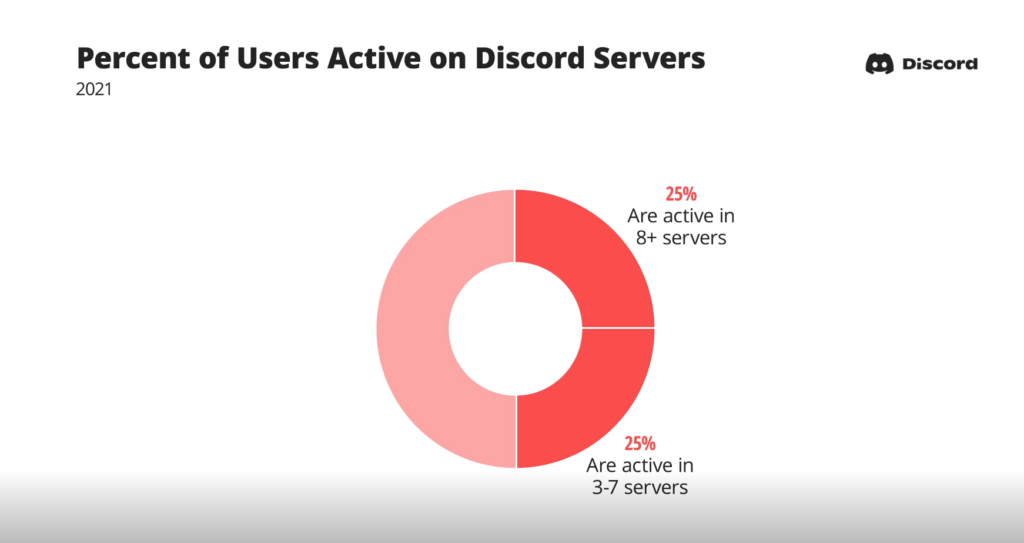
By giving gamers a streamlined messaging platform that prioritized Speedy interaction discord’s founders Jason Citron and Stan Wischnewski believe that the relationship they formed with fellow gamers weren’t important part of the gaming experience. But existing messaging tools were slow and unreliable. In 2015, 59% of teens who played online games use voice over IP(Voice over Internet Protocol) to strategize and chat with teammates while playing video games. But in game, voice over IP was rudimentary, so players used third party options like Skype and Trello and Team Speak. These messaging platforms offered laggy, poor quality voice chat, have interfered with gameplay, and inhibited gamers ability to form meaningful connections.
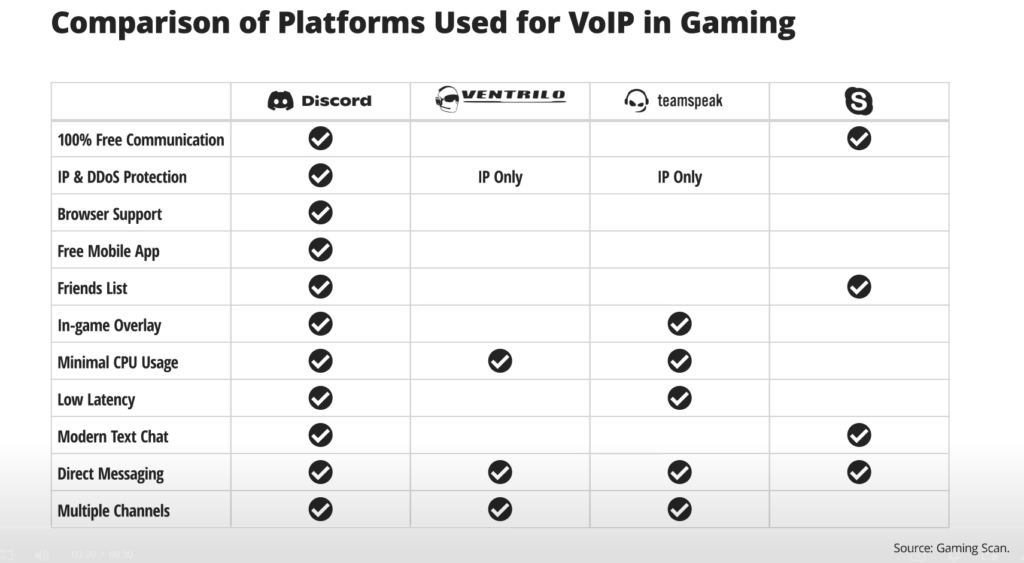
Discords focus on providing consistency in communication alleviated players frustration while gaming third, determined potential rewards and prioritize customer relief. Discord uses rewards of the tribe to provide users with three resolutions to improve communication without hindering gameplay. One creating a space that allows for multiplayer communication to encourage messaging discord, users can create topic oriented communities called servers that post chat rooms and voice chat channels. Each discord server can host thousands of simultaneous online users. In 2021, there were over 19. Billion active servers covering a wide array of topics on the platform. 50% of users are active in at least three servers and 25% take part in eight or more two voice over IP that is better and faster than any competitor. Voice chat isn’t useful if it slows down gameplay. Discords team is dedicated to making it as efficient as possible to simultaneously. Name and chat by using less bandwidth than competitor platforms. This results in less interference with concurrent online activities and faster interaction, making simultaneous gameplay much easier and more fun. Today, 40% of discord users use their voice chat feature. The most popular discord. Server is for fortnight, a multiplayer online video game, and many of the most popular servers are for games that require team communication. 3 low barriers to entry discords freemium plan includes talking to teammates, participating in channels and creating servers. Additional functionalities like better emojis and. HD streaming can be added with a paid subscription, but for the average discord user seeking a sense of togetherness, the free option satisfies their rapid communication needs, providing easy interaction with an online friend group gives users a reason to repeatedly interact with the platform. For companies looking to encourage user interaction. Through variable rewards, Discord offers a few key learnings. First, rewards of the tribe are the most likely reward to encourage repeat interaction by prioritizing a community building feature through better messaging, discord incentivizes users to continue to interact with their platform. Users know where to find other players willing to talk about the same. Game or general topic of interest and returns the platform for that sense of community. It provides. Second one product can both reduce and increase variability depending on the consumer needs, though discord’s original purpose was to reduce communication variability, it ended up also providing variability through the topic based servers. Discord users can log in and join any of millions of servers based on their interests, and create friendships with likeminded individuals. In fact, 70% of discord users use the app for gaming and for discussing other topics of interest.
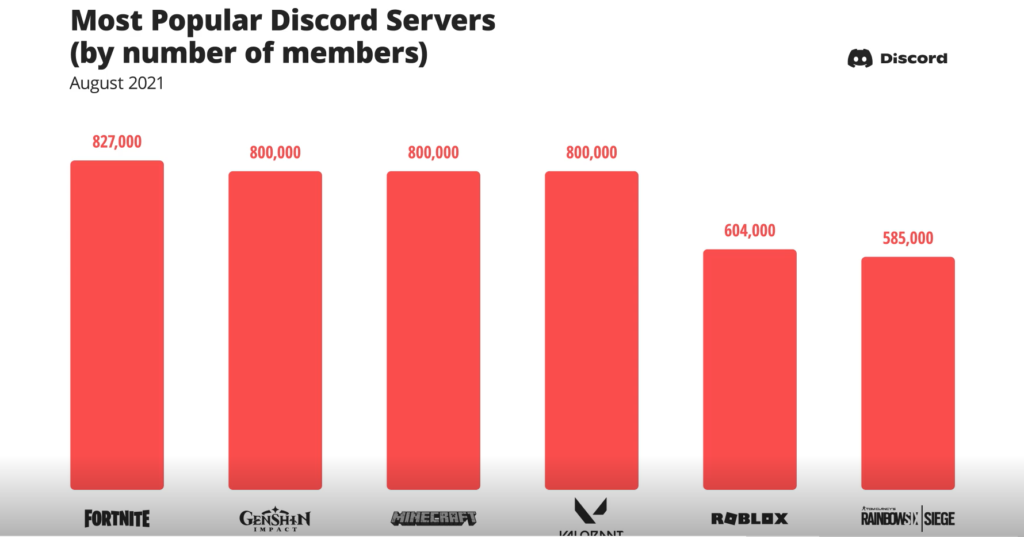
How do we know whether our hooks are working well? There’s a process we can use called habit testing. The best way to know whether a customer likes our product and wants to keep using. It is identifying whether they actually came back frequently enough to interact with it. To successfully test to happen, you need access to timestamped data on how real people engage with the product. So it’s absolutely critical that you have that infrastructure in place to know whether the ideas that you’ve generated actually have the effect you intended. For example, Strava app captures a specific data on each unique user, including what pages they visit and when additional data points such as Geo location or a bonus. Popular metrics like daily active users are less helpful indicators of habitual engagement. Why is daily active users or monthly active users a bad metric for tracking? User engagement and retention. Well because tracking daily and monthly active users doesn’t tell you about what’s happening to new users. If you have a sudden influx of users because you spent a bunch of money on an ad campaign and now lots of people are starting to use your product, that would show up as a spike in your daily active user base. But if those users came for the first time. And then they all week out. They’re not continuing to engage. What you’ll find is that very quickly that number is going to tumble. So looking at a snapshot in time and basing your engagement retention numbers based on one metric of daily or monthly active users is not a great metric. A better metric is percentage of obituated users. That can give an indication of what percentage of your users find the product valuable enough to form a habit around. Let’s breakdown this metric the percentage of obituated users. This process start by first identifying what would a habituated user look like. Go back to the behavior you selected and how you plotted it in the habit. So how did you envision measuring it? If a user was habituated, how frequently would they perform the habit in a given week? Now you have to define that what, in whatever way, works for your product. Some products we use multiple times a day, some products we use once or twice a week, depending on your specific application or product. It’s imperative that you decide what a habituated user would look like. Is it someone who opens an app or checks a dashboard several times a day or maybe just once a week? A social app like SNAP or Instagram might be used multiple times per day buying coffee or Twitter daily Yelp maybe several times a week, set a reasonable threshold, guesstimate what it should be, and don’t be overly aggressive this. Is your North Star metric now that you know how often a user should be using your product, identify how many of your users actually meet that bar? The percent of habituated users if at least 5% of your current customers perform the behavior, you’re in good shape. If not, go back to the drawing board and revisit the hooked cycle. In your product design, if you’ve passed the 5% threshold, don’t stop there. A great metric would be 20% and over. If 20% of your users are habituated, that’s a really great place to be.
Once you’ve examined the percent of habituated user’s portion of your metric, define the cohort.
Cohorts define a group of users with a common attribute time or product adoption, profession, etc.
But how do we analyze it? How do we know if our hook is getting better overtime, the best method to do this is using what’s called cohort analysis. Cohort analysis is a tool to measure user engagement over time. It helps to know whether user engagement is actually getting better over time or is only appearing to improve because of growth.
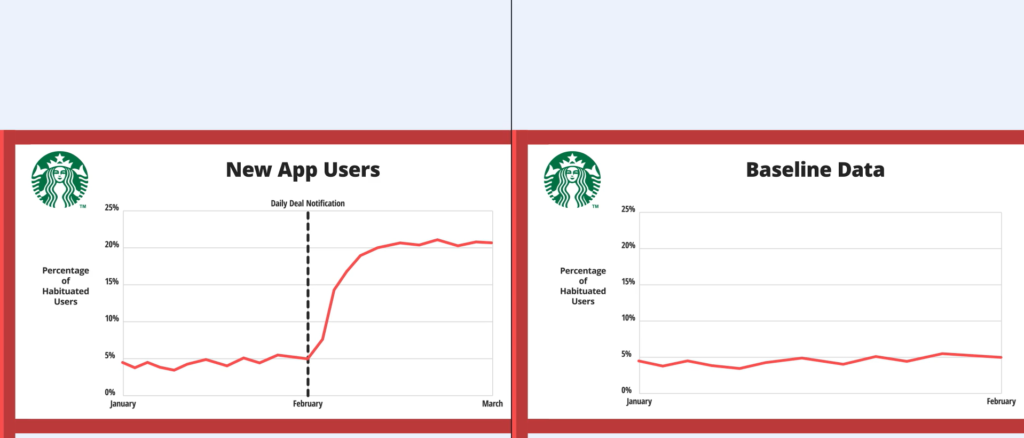
It’s only by comparing one cohort to the next. Do you know whether that feature is something that should stay in your product design or whether you should yank it out first with the infrastructure in place to capture the timestamp to data, understand your baseline percentage? Waited users, Starbucks may define habituated user as a customer buying coffee from their store daily in 2019 16.1% of Starbucks app users purchase coffee from the Seattle coffee chain at least one time per day. This is a baseline percentage of the jointed users. Next, a form Hypothesis. What specific change do you plan to make and how will that impact to the percent of habituated users in a cohort? You’ll make a change in your product design and what you want to see is that for the new cohort of users who are now exposed to this feature, did the level of habituated users go up or go down Starbucks? May hypothesize that pinging customers every morning with a deal of the day exclusive to app users will increase daily visitors to 20% with their hypothesis in mind. Define the cohort to target with the test. The test cohort for the Starbucks Daily Deal notification might be all users who download the app next month as the results roll in. You’ll compare the data you collect from the new app users with the baseline data in Starbucks case, if 20% of the new cohort our daily visitors, you know that the Daily Deal notification increases the habit of purchasing daily coffee cohort analysis tracks the percentage of habituated users overtime. So when you have, Play cohort and your tracking. What percentage of those users are currently habituated? You’re going to get a line running across time. Now the goal is that with each successive feature, you test, that line should get higher and higher as the percentage of obituatey users increases. When the month closes, you can compare data between the new app users. When your baseline data if the rate new app users visited a Starbucks store was higher than your baseline data, you can consider launching the Daily deal to all Starbucks app customers. But sometimes this change is not linear nor predictable.
Once in a while, we see this magical phenomenon that we call the smile graph. What happens with the smile graph is that the percentage of habituated users decreases until a truth where it begins to suddenly increase. Take Evernote firm an example. Evernote discovered only .5% of Evernote users upgraded to the paid version one month after joining. After this initial decrease, 8% of Evernote users were upgrading to the paid tier. After one year and after three years 15% we call this user resurrection. This happens when customers find the product is more valuable later with time. Counterintuitively, the percentage of habituated Evernote users in a cohort initially dropped before it significantly increased the underlying cause for the. Use smile graph the investment phase. New customers make a small investment in the product. Take a break and then later return at higher rates because they missed the investments of information they made in the product. As you look to apply the hook testing framework on your product, consider two key learnings. First, Test early. And often I found as a direct relationship between a company’s likelihood of succeeding and their ability to test quickly that the hook model is not a magic formula to help you come up with the answer you’ve always been waiting for. That, rather by testing quickly. And frequently we can put these product hypotheses to the test to see if they actually increase the percentage of habituated users and second engagement before revenue. The result of engagement is monetization, not the other way around.
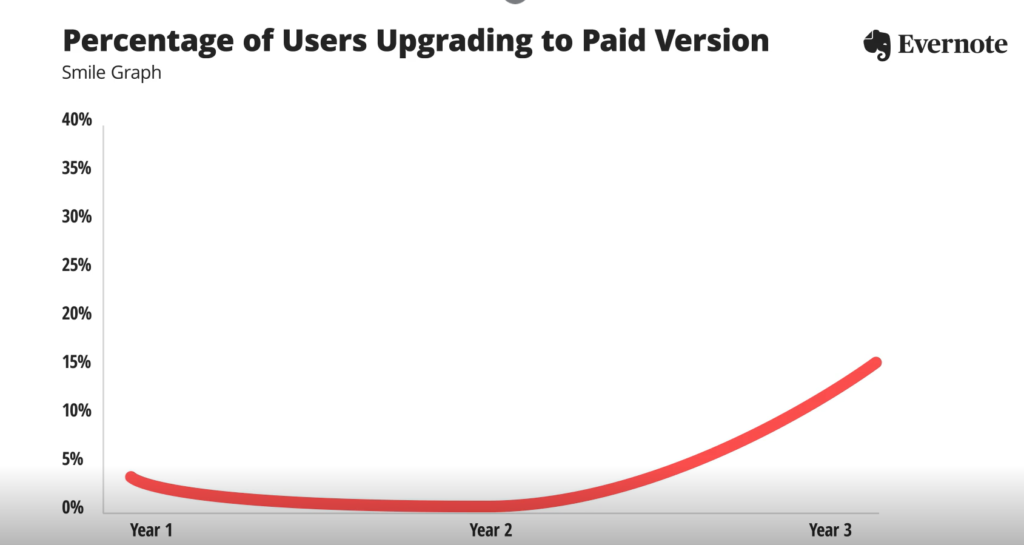
So many times when it comes to ecommerce companies, people are so focused with getting people to check out. But they don’t ask themselves how can we get people to check in? Well, the end goal is getting customers to spend money, focus first on the habituated engagement with your product customers checking in with habituated use will lead to customers checking out with their pocketbooks for more unhappy testing.
If you’re shopping online, chances are you’re going to check Amazon before checking out. In fact, 89% of shoppers are more likely to buy products from Amazon than other retailers, so it’s no surprise that 60% of American households, Amazon Prime members more households have a regular relationship with Amazon that individual users of Netflix, and they spend almost 2 1/2 times more money than non-prime members each year. But Amazon doesn’t rest on its laurels. The firm continues to test and refine hooks within its habit cycle to make buying from Amazon even easier. One of the most recent examples, shopping via voice, launched in 2014. The Echo smart speaker and its virtual assistant Alexa created a new way to interact and shop with Amazon. Amazon is betting big on this technology. Between 2017 and 2018, the number of Amazon employees dedicated to Alexa, double to more than 10,000 team members and what began as an over qualified speaker is now an essential home appliance. As a result of the firms focus central to a product engagement strategy is its ability to move through the hook cycle. Starting with the trigger to the action phase to the variable reward. And finally the investment. Which encourages the user to return through the habit loop. Amazon demonstrates the value companies can unlock by mastering habit testing, continuing testing, and refinement of its Alexa virtual Assistant and Echo device simplified the purchase action in the Amazon Store, and now moves customers through the hook cycle faster than ever. Specifically, Amazon measured the percent of habituated users and conducted cohort analysis to increase engagement, ultimately building a customer habit of purchasing goods through the audio interface. First, establish the percent of habituated users through its Echo device. Alexa collects timestamped user data 24 hours a day. Now this data helps the company establish a baseline percent of habituated users. The Alexa software collects and analyzes data to help Amazon build a full picture of its users gathering data about how customers sleep, eat, and generally live at their homes. The company is known to collect a massive amount of data on its users. Of its users, 64% of men and 53% of women use Alexa enabled devices multiple times per day, well above the 20% have its own goal of habituated users having a baseline of habituated user data helps Amazon understand how product changes impact engagement and purchase frequency. Second, use cohort analysis to increase engagement with baseline metrics established Amazon uses cohort analysis to improve usage frequency of Alexa enabled devices beginning with device design. Amazon recognize that users would be more likely to interact with hardware products if they were prominently displayed in the home. This required Amazon designers to consider the devices aesthetics.

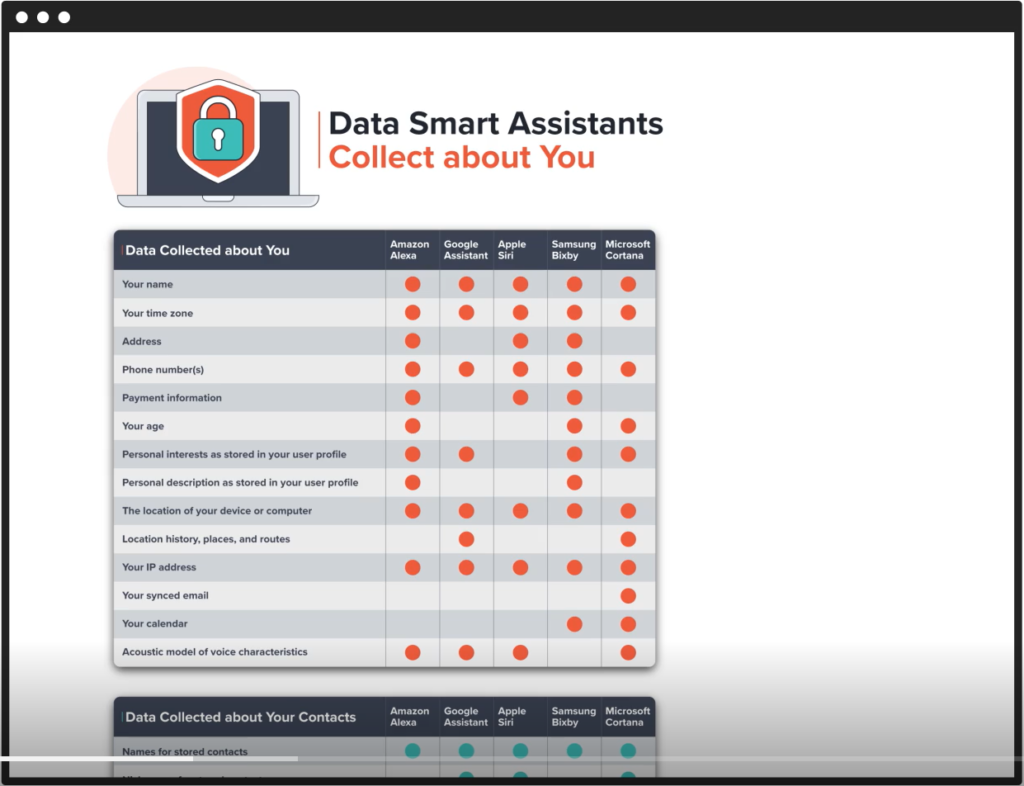
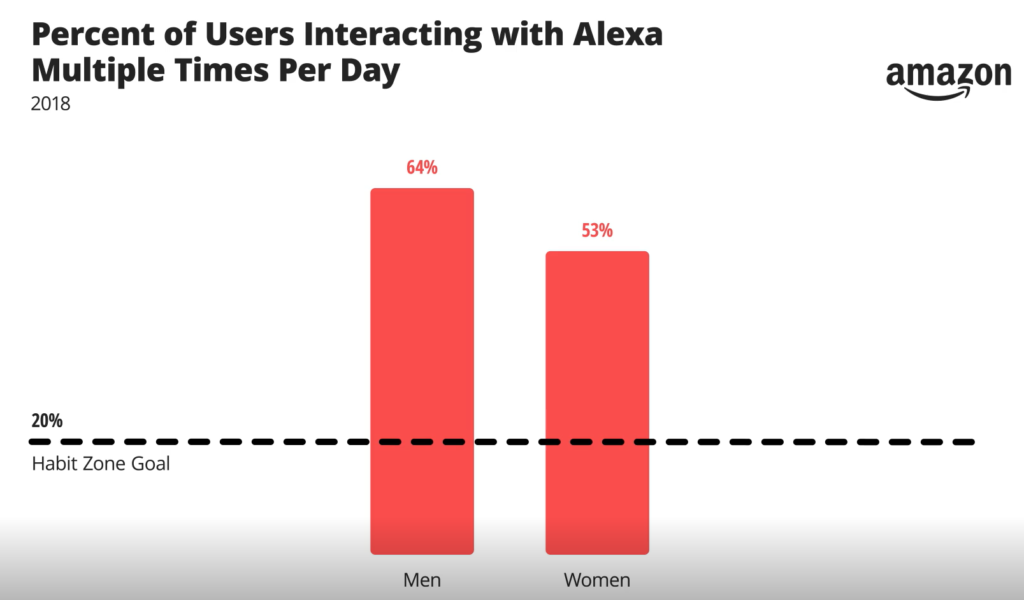
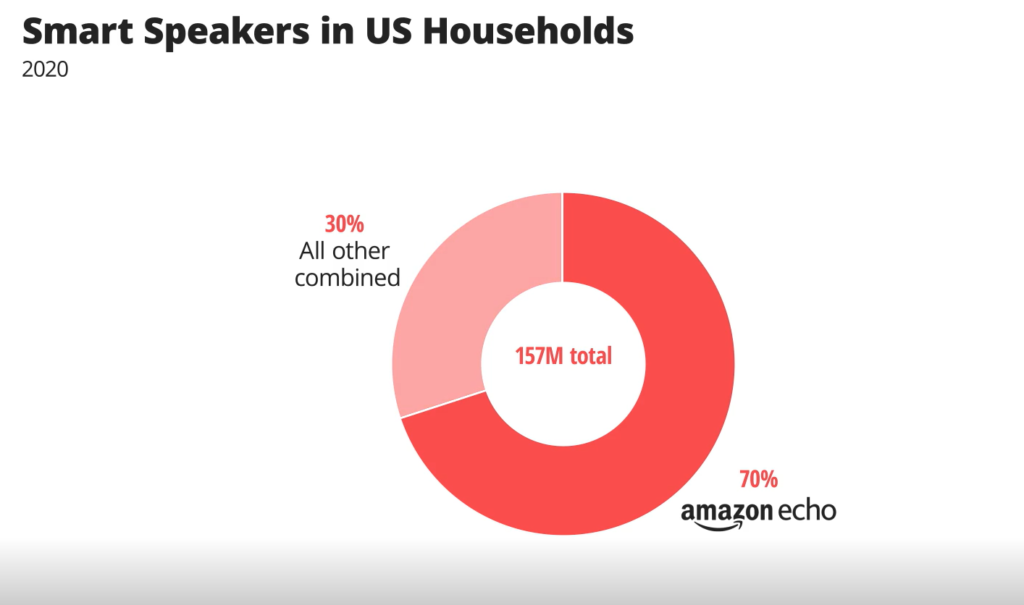
Today, Echo devices look more like modern art pieces than clunky speakers, encouraging users to place the devices in highly visible areas at their homes. But that wasn’t always the case. Even by Echo third generation, 96% of devices were placed out of sight. Against the wall and only 5% were highly visible on a kitchen island. Amazon Echo team use cohort testing with Consumer Focus groups to refine physical features to persuade customers to place devices in prime positions in their homes. The team sought feedback from over 100s customers around the world who were sent sketches. And prototypes the result, a spherical design that made the device more aesthetically pleasing for the center of the room.
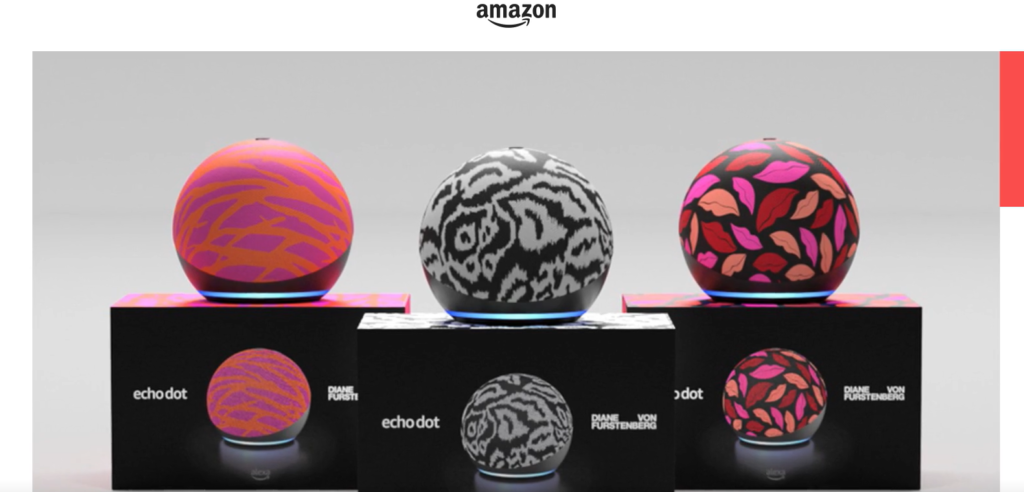
Design features of the new device provided sound directionality without sacrificing sound quality when placed anywhere. Physical improvements encourage more prominent placement in user’s homes, but design alone wasn’t enough to refine user spending habits, building an audio based shopping habit required Amazon to focus on improving Alexa’s auditory interface to make the complex task of voice purchasing seamless with massive data collection and open source development process, Alexa developers can run regular cohort analysis. To constantly develop and test new capabilities, which the company refers to as skills, Amazon is so committed to the scientific process through testing that it has an entire website, Amazon Science, to share product testing developments after implementing the physical redesign of the Echo and the improved purchasing ability through Alexa. Amazon was able to measure usage and behavior data against the percent of habituated users to determine if the product changes impacted repeat user behavior. Cohort analysis has proven to be successful for the Echo. Amazon expects its updated 4th generation Echo to double annual sales by 2025. The device already makes up 70%. The 157 million smart speakers in American households and 20 million of these homes own more than 1E, making it easier to interact with Amazon throughout the customers home for companies looking to test books to increase the percent of habituated users, Amazon offers two key learnings. First, even a successful product can be habit tested to increase customer use. There’s no question that Amazon is the market leader when it comes to both retail and smart speakers. Amazon is the world’s largest retailer outside of China, and the Echo holds over half the smart speaker market. So why bother improving it? Amazon knows that by improving convenience through feature refinement, it can capture and ever increasing share of the market. Second, monetization comes through engagement. While the Echo itself doesn’t necessarily make money for Amazon, the company knows that Echo owners spend 66% more than the average Amazon customer. So testing is focused on first increasing Alexa’s user frequency by spreading the echo throughout the home. Increasing engagement with the Echo and Alexa streamlines the action phase of the Amazon Hook cycle. This ultimately leads to increase engagement and revenue within the Amazon ecosystem.

